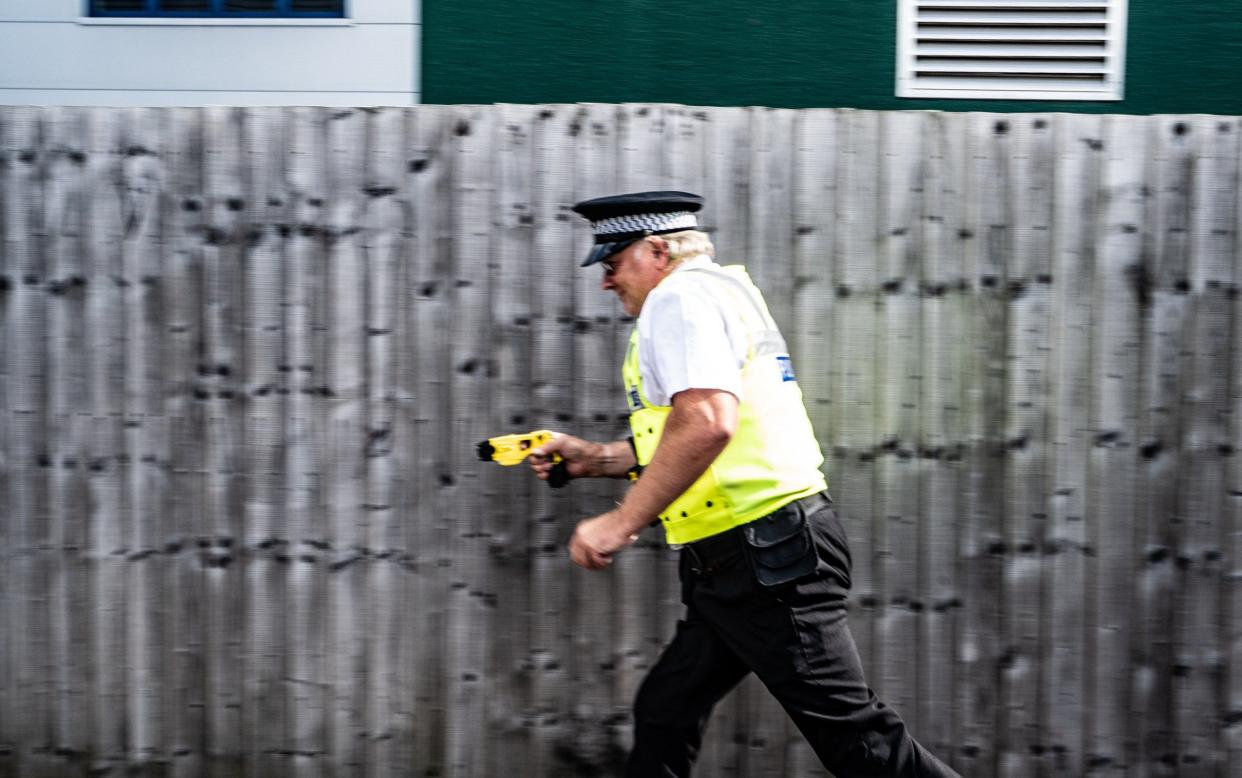Every officer should be trained to use a Taser – for all our sakes

To taser or not to taser? That is the question in modern policing.
Like a great many members of the public, I should have thought the answer was easy. Just this week we saw dramatic doorbell footage showing the moment police tasered and arrested a 36-year-old man after a horrific stabbing attack in north-east London.
Schoolboy Daniel Anjorin, aged just 14, was killed, and four people – including two police officers, one of whom almost lost her hand – were left injured after the rampage in Hainault.
The suspect was finally stopped and brought to the ground after he was hit by three separate Taser discharges. It looked like a highly effective weapon – so why doesn’t every copper carry one?
Since this shocking incident the Police Federation has renewed its call that every officer should have the option of carrying the non-lethal devices. Surveys also show that serving officers in England and Wales overwhelmingly (as many as 83 per cent in Greater Manchester) want to be routinely equipped with them – yet uptake varies considerably depending on the police force.
Northumbria has the highest proportion of Taser-trained front-line officers, Staffordshire the lowest. The Metropolitan Police is somewhere in the middle, with 7,500 front-line officers trained and equipped out of an estimated 34,000.
It’s not been revealed whether the female police officer who underwent emergency surgery to save her hand was carrying one, but it seems unlikely. So why the reluctance to roll out such a highly effective way of containing a violent suspect? Tasers, which are bright yellow, fire two barbs that attach to the target’s skin and deliver a sequence of short high-voltage pulses that result in the loss of voluntary muscle control, causing the subject to fall to the ground or freeze.
Initially the voltage peaks at 50,000 volts, but by the time it reaches the body it is substantially less. People who have been tasered have variously described it as excruciating, like having their brain vigorously shaken, or akin to the sensation of “bees crawling through their skin”.
I was surprised to learn the effect only lasts five seconds – not long, but long enough for a suspect to be handcuffed or otherwise contained.
According to the Police Federation, in 85 per cent of cases where a Taser is drawn, it is not fired – because its use as a deterrent is enough. Again, surely this underlines the need for more Tasers? Knife crime is on the rise; anything that gives assailants pause should be part and parcel of front-line policing.
Concerns over the potential use of Tasers on those with mental health problems should certainly be addressed. As with the discharge of a firearm, when a Taser is used, it is logged and subject to investigation. They are not fired lightly.
Our police forces don’t routinely carry guns. They are expected to perform their duties in what can be – or rapidly become – the most dangerous and unpredictable of scenarios, unarmed.
Is that reasonable? I don’t think it is. It is high time all officers were permitted to carry Tasers. For their safety. And for ours.

